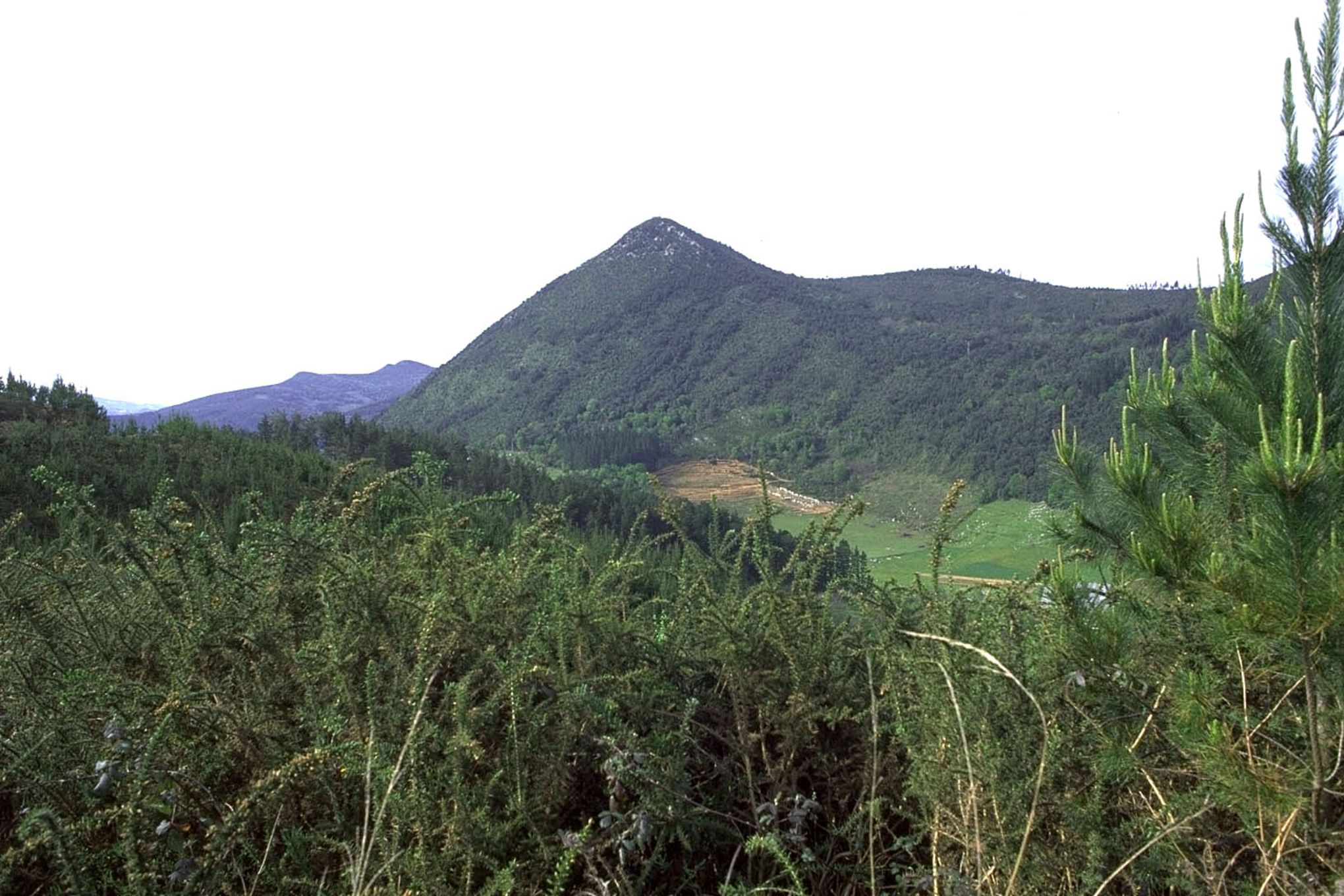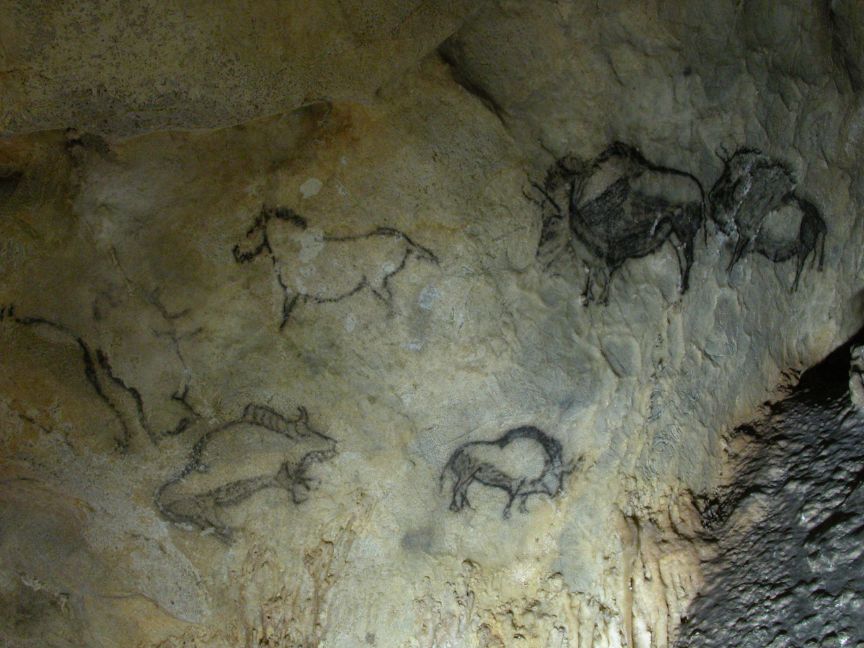Santimamiñe Cave

Identification of the Property
SubirKortezubi, Bizkaia, Basque Autonomous Community
Geographical coordinates
UTM 30T 529550E / 4799585N Z: 150
Description
SubirTopographic description
The entrance is located on the lower slopes of Monte Ereñuzar, at 150m above sea level. A side-passage leads of the main gallery of the cave about 50m from the entrance, and most of the art is found in this area. The side-passage has a short access passage or ante-chamber, and an irregularly shaped final chamber with stalagmites and flowstone.
Date of discovery
The art was discovered in 1916, through the curiosity of a group of boys. They entered the cave and succeeded in climbing up to the side-passage, where they saw a group of paintings. Nowadays, access to this place is easy because metal ladders have been installed, but it must have been quite difficult originally. The boys told their teachers about their find, and the news then reached the composer Jesús Guridi, who informed the Deputation of Vizcaya. The authorities then took charge of the discovery and gated the cave to avoid any damage to the art.
Archaeological research
The cave has an important archaeological deposit, several metres thick, at its entrance, where Palaeolithic and recent Prehistoric strata have been documented. The deposit and the art were examined in the 1920s and 30s by an active research team formed by T. de Aranzadi, J. M. de Barandiaran and E. Eguren, who published their results before the start of the Spanish Civil War. Later, numerous prehistorians have revised the archaeological record in the cave, particularly the Palaeolithic art. The most interesting contributions have been made by J. M. Apellániz (1969-82), and more recently by J.C. López Quintana.
 Pulse para ampliar
Pulse para ampliar
Artistic contents; paintings and engravings:
The chambers described above are the locations of most of the art in the cave, which has a total number of some 50 depictions. These are small or medium-sized, except for the two large bison in the main panel. Most of the figures are painted in black, apart from about ten engravings, or make use of both techniques.
Beginning in the chamber, on the left the main panel (Group IX) is formed by seven complete figures and a curved line that appears to be the hump of a bison. A horse is in the centre of the panel, while the other animals are all bison. The second group of figures is found on the left of the entry into the chamber. It consists of several incomplete bison; some isolated lines of paint, and engraved signs. The main figures are two bison in black and an engraved bison. The ceiling has the black outline of a bison and an area of flowstone has poorlypreserved figures of a horse, bear, stag and ibex.
To the right of the entry, another group of rather faded paintings on a stalagmitic column represent three bison in a vertical position. Two of them are shown face-to-face. Among other lines and marks in the chamber, there is an ibex facing the ceiling and an outlined bison. The walls of the Ante-chamber have a badly-proportioned horse, and a bison lacking its fore-quarters facing another in an identical condition. The opposite wall has a bison drawn with a long body and the sketch of another animal. Two figures of ibex are known near the junction with the main passage. The rest of the art is separated from this nucleus, on the right-hand wall 150m from the entrance, in the “New Hall of Paintings”. The most interesting figures in this area are a stylised and detailed ibex, the outline of a bison with another bison to the right, and small figures of a horse and a further bison.
The shrine at Santimamiñe is complex, where several different artists appear to have worked, especially the “maestro” who was responsible for the main panel in the chamber. But the different hands can be related by the homogenous approach they used. Therefore, all the paintings seem to have been produced within one, possibly long, period but one in which no great variations occurred in artistic tastes. The ensemble has been attributed to the middle-late Magdalenian period.
Bibliography
SubirAPELLANIZ, J. M. 1982. El arte prehistórico del País Vasco y sus vecinos. Bilbao: Desclée de Brouver APELLANIZ, J. M. 1969. La caverna de Santimamiñe. Bilbao: Diputación Foral de Vizcaya.
ALTUNA, J. 1975. Lehen Euskal Herria. Guía Ilustrada de Prehistoria Vasca. Bilbao: Ed. Mensajero.
ARANZADI, T., BARANDIARAN, J. M., EGUREN, E. 1925. Exploraciones en la caverna de Santimamiñe (Basondo, Cortezubi) I: Figuras rupestres. Bilbao: Gráficas Grijelmo.
ARANZADI, T., BARANDIARAN, J. M., EGUREN, E. 1935. Exploraciones en la caverna de Santimamiñe (Basondo, Cortezubi) III: Yacimientos azilienses y paleolíticos. Bilbao: Diputación Foral de Bizkaia
GARATE, D. 2017: Los primeros artistas de Bizkaia. Las cuevas decoradas durante el paleolítico. Kobie Anejos 15.
GOIKOETXEA, N. 1967. La cueva de Santimamiñe. Bilbao: Diputación Foral de Bizkaia.
GORROTXATEGI, X. 2000. Arte Paleolítico de Bizkaia. Anejo a Kobie nº 2.
HOYOS GÓMEZ, M. 1993. Procesos de alteración de soporte y pintura en diferentes cuevas con arte rupestre del Norte de España: Santimamiñe, Arenaza, Altamira y Llonín. La protección y conservación del arte rupestre paleolítico (Mesa Redonda hispano-francesa. Fundación Archivo de Indianos, Colombres, Asturias: 3-6 junio 1991): 51-74. Oviedo: Principado de Asturias.



